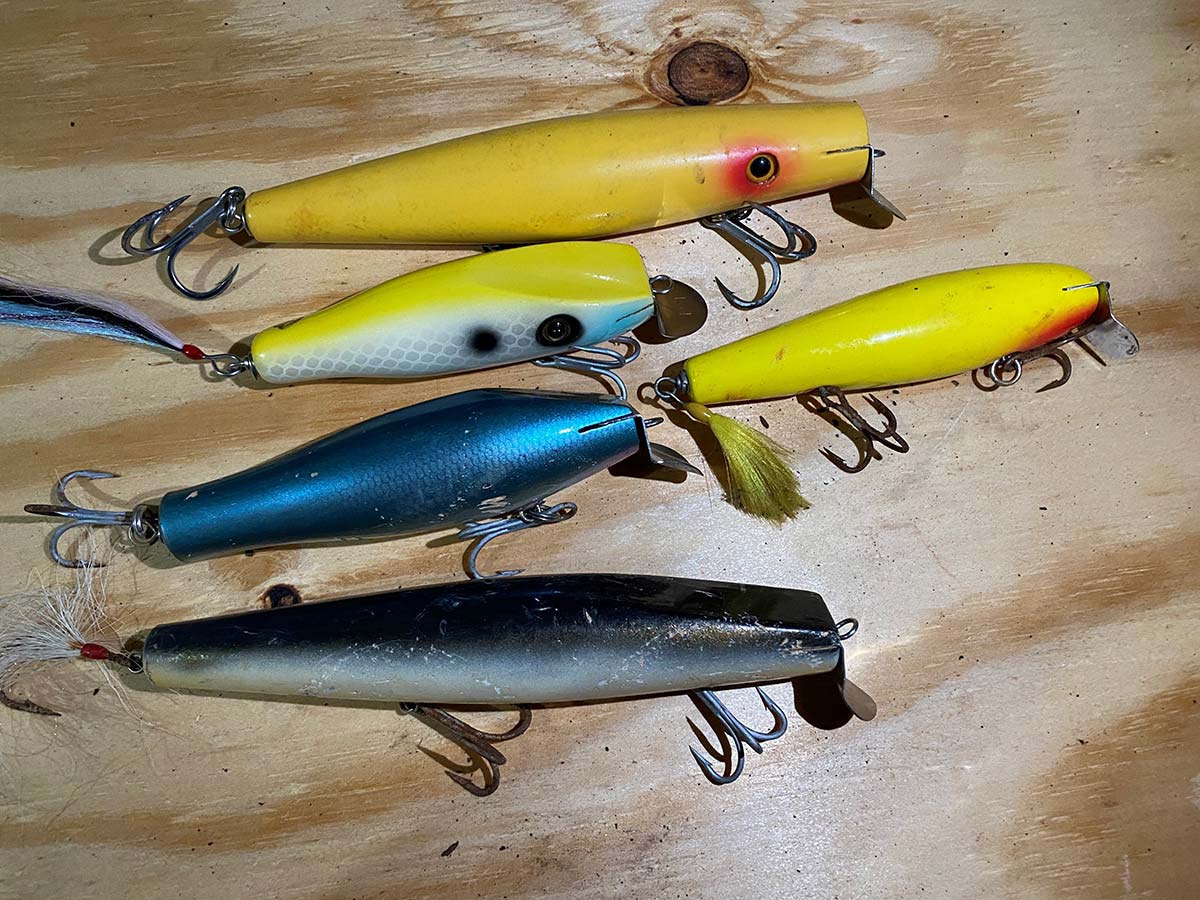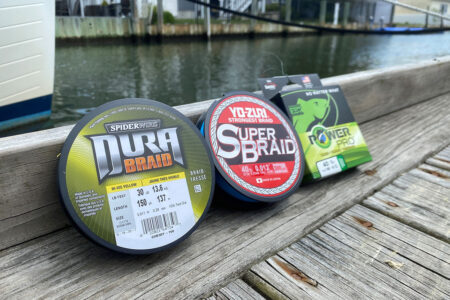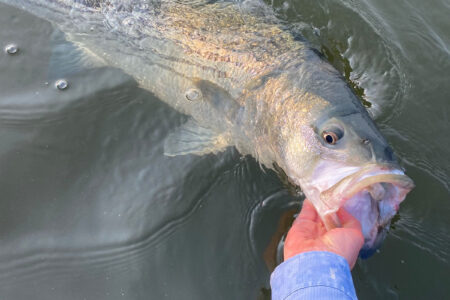
Like the Beach Boys say, they send out good vibrations in the water.
Like my dad’s Oldsmobile, these plugs are old school; first hitting the scene in the 1940s. Metal lip swimmers are just that, plugs (historically wooden) that have a large metal lip at the front of them. They are designed to have a “swimming” action, and that large wide metal lip (among other things) is what gives it its mojo.
They are big, and for some people they are a challenge to cast. With the large body flipping and flopping in the wind, the hooks sometimes tangle with each other or on your line, resulting in it hitting the water “balled” up and ineffective. Most people think of using them in calm conditions because of that, but many will tell you the more white water the better. Out of all the plugs in your bag, these are the costly ones. Prices usually start in the high teens up to the mid-$30 range. Trust me on this one — it’s heart breaking seeing a $35 plug being launched further than you’ve ever cast before. So, practice your knots, and then practice some more.
Styles And Sizes
Flat head, slope head, rounded, and jointed; surface, subsurface and divers. For a plug with such a long history and that comes in so many styles (not to mention styles within the styles), I can probably write a column highlighting each one. Honestly, I probably will so we can pay homage to each style as well as the people who created them; both plug and the people themselves sure deserve it.
Most of them usually come with two treble hooks, one placed behind the front 1/3 of the body and the other placed at the beginning of the last 1/3. Commonly there is a “tail” that is dressed with bucktail, some plug makers add a single siwash on the end while some have another treble. They range between 4-3/4 inches up to 11 inches and from 1 ounce up to over 6.
The most common version is the surface swimmer (self-explanatory). There are also versions that swim below the surface (2 to 3 feet down) and deep swimmers; that for the most part is just heavier in weight and with an adjusted lip or different placement of the line tie.
Today, in order to keep it manageable, I’m only going to expose the tip of the iceberg regarding these plugs and put more focus on the most popular (also most fun to use in my opinion) and probably the first style you will purchase; the surface swimmer.
The most common style of surface swimmer has a flat face behind the metal lip. It’s got a wide body that bellies out in the middle before tapering to a slimmer tail. As a result of this style, while swimming on the surface the plug pivots from the center of its body (unlike minnow plugs that swim from the nose) causing the tail section to wag side-to-side; usually enhanced by a dressed Siwash hook or a hookless flag. Like the Beach Boys say, they send out good vibrations in the water that some predator fish can’t resist. In my opinion nothing gets your adrenaline going like watching your plug throw off some topwater waves and watching a striped bass or bluefish stalk your offering and then slam it.
Method To The Madness
Along with lots of styles and colors of these plugs, there are also a lot of videos on them, so invest the time and look at some of them. Take note of the various versions and see which one(s) you’d like to try first.
To start, let the current do most of the work and vary your retrieve as you move the plug through different types of water; pay attention to how it moves. What is the best approach? A slow wide wobble, or a fast tight one. An occasional jerk of the rod tip that causes the plug to twitch or splash lightly can be very effective. This extra sound and vibration will set it apart from the common sound of the water and will potentially trigger a fish to investigate and strike. Like most things, these take some practice.
The shape or bend of the lip as well as the placement of the line tie play a major role in the way the plug moves. Bend the line tie up slightly to obtain a deeper retrieve and down for more surface action. Fine-tuning should be kept to the line tie of the plug or the lip, or maybe both? Try it and find out; also, you guessed it, practice. Relating to any adjustments you made, or style of your retrieve, pay attention and learn the little nuances on how the plug reacts to each tweak. Take 20 casts one way, if nothing happens; take 20 casts trying something different. Take notes, remember you have a logbook for a reason.
These are some handsome looking plugs with some substance to them. Size wise they are the largest ones I’ve covered so far. Heck some of the bigger jointed ones won’t fit in your regular storage. That said, with the big shiny lip, big eyes, and some cool colors these plugs catch both fish and fisherman.



